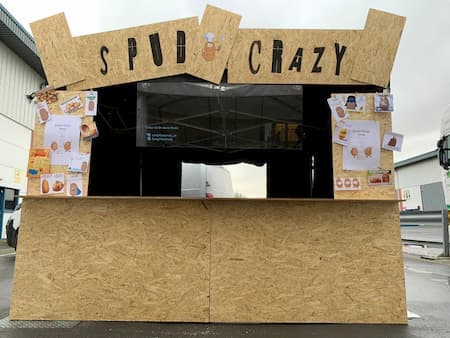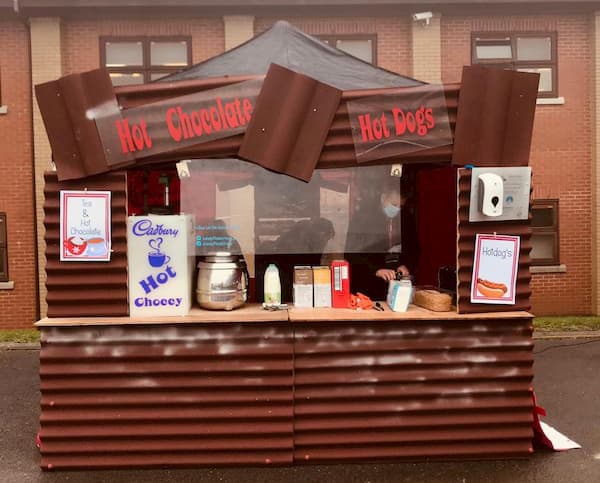One of our most popular options, especially in the winter months, is hot chocolate. Drinking chocolate, cocoa, call it what you will. That lovely dark smooth chocolate drink. We offer two options for the type of chocolate we use so we are going to look at the choices. First thought lets take a quick look at the history of the drink.
History
Evidence suggests that the Mayan civilisation was consuming chocolate as far back as 500B.C., and may well have predated that. The drink of that time was served cold, by grounding cocoa seeds into a paste and mixing it with water, cornmeal, chilli peppers and other ingredients. It would be poured back and forwards between containers to develop a thick foam.
At that time, sugar wasn’t present in the Americas, so the drink would have been rather bitter. Vanilla and other spices were added to offset this.
Europeans didn’t come into contact with the drink until 1502, on the fourth voyage of columbus. When Cortes defeated the Aztecs he demanded their valuables. These included cocoa beans and the equipment to make drinking chocolate, bringing them back to Spain in 1528. The drink gained popularity, with cocoa even being given as part of the cowry when members of the Spanish Royal family married other European royals.
Sweet Chocolate
When sugar was eventually added it created the drink we know today. It became a luxury item with the first chocolate houses (like a modern day coffee shop) charging upto 75 pence in 1657. The equivalent of upto £65 a cup nowadays. The great Samuel Pepys wrote about consuming drinking chocolate after the coronation of Charles II in 1661. Ostensibly to settle his stomach.
Coenraad Johannes van Houten
This Dutch gentleman developed a cocoa powder producing machine in the Netherlands. It separated the greasy cocoa butter from the seeds, leaving a pure chocolate powder behind. This was much easier to stir into hot milk or water. It also led to the discovery of solid chocolate.
Nowadays it is widely consumed throughout the world. The Americans drinking a rather thin instant version compared to the thicker European brew. Spain and Italy are noteworthy in adding cornstarch to produce an extremely thick drink. It is a traditional accompaniment to the SPanish dessert of Churros.
So what hot chocolate’s do we use?
Cadbury’s Hot Chocolate
Easily the U.K.’s most popular drinking chocolate, and for good reason, it just tastes so good. John Cadbury opened a grocers store in Birmingham in 1824. A Quaker, he felt that tea, coffee and drinking chocolate’s were a healthy alternative to alcohol.
By 1824, he was producing 16 different varieties of hot chocolate, available as both a powder or a pressed cake.
1906 saw the creation of Bournville Cocoa, made from adding carbonate of potash to the cocoa mix, it created a slightly less bitter drink.
Today we use the classic Cadburys drinking chocolate, made with hot milk (the water version just doesn’t do it for us), and it is easily our most booked service. For weddings and other special events we add Baileys Cream, creating a delightful alcoholic concoction that is oh so smooth.
Charbonnel Et Walker
A certain Mme Virginie Eugenie Charbonnel, from the esteemed Maison Boissier chocolate house in Paris. Set up shop with Mrs Minnie Walker to open a shop in Bond Street Mayfair in 1875 with the encouragement of Edward VII. Their original shop was branded Parisian Confectioners and Bon Bon Manufacturers.
Their drinking chocolate is sold as chocolate flakes rather than powder. It doesn’t mix into milk as well as the Cadbury’s offering, so we tend to use hot water to create a thick chocolate sludge then mix this into the hot milk.
It is a fabulous chocolate, but more of an acquired taste containing a darker chocolate than others. Almost everyone has drunk and enjoyed Cadburys hot chocolate, and the different taste can throw their taste buds a little. Truth be told most of the people who book this option are doing so to add a touch of perceived luxury to their event.
So what would we recommend ?
Smoothness
Cadburys *****5
Charbonnel *****5
They are both smooth, top class options with nothing to choose between them.
Taste
Cadburys *****5
Charbonnel ****4
There isn’t anything wrong with the Charbonnel, and no doubt some will prefer it, but Cadbury’s is the classic taste that most people recognise as THE hot chocolate.
Ease Of Use
Cadburys *****5
Charbonnel ****4
Cadburys mixes into the hot milk with ease. Charbonnel flakes need to be mixed with hot water to create a paste that is mixed into the milk.
Overall
Cadburys 15/15
Charbonnel 13/15
They are both great drinking chocolate. Rich, creamy and smooth. But honestly, if we had to choose one it would be the classic Cadburys offering. It tastes easily as good as any other chocolate out there, and it is still what most people expect hot chocolate to taste like.
Sources;


